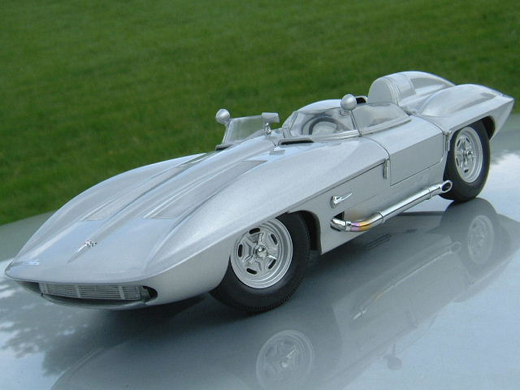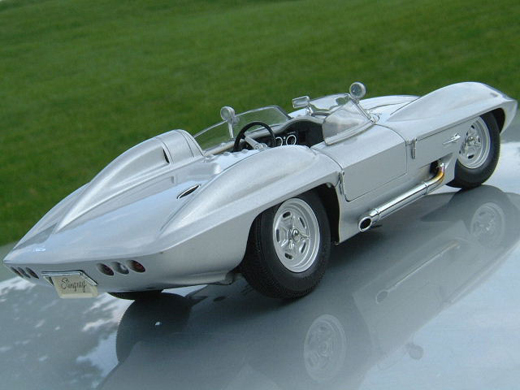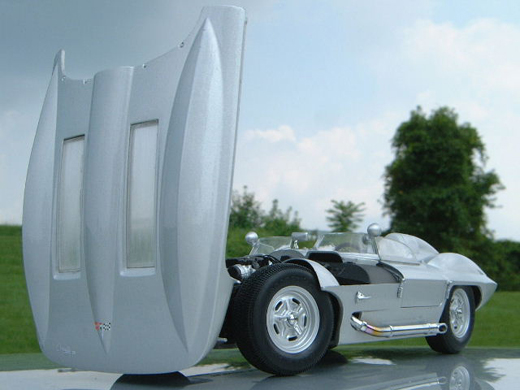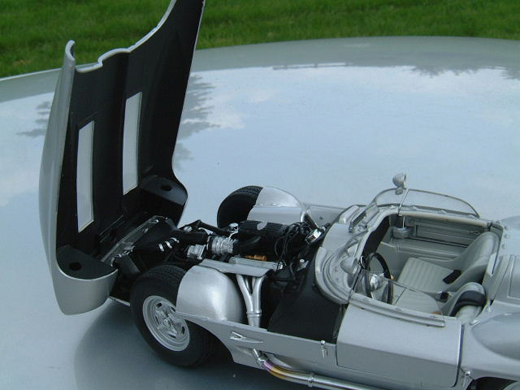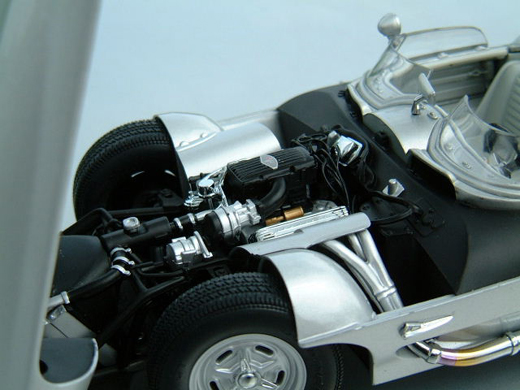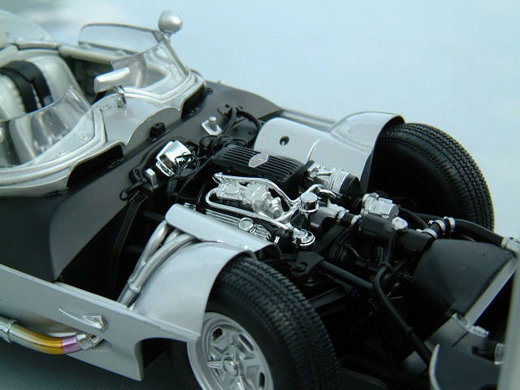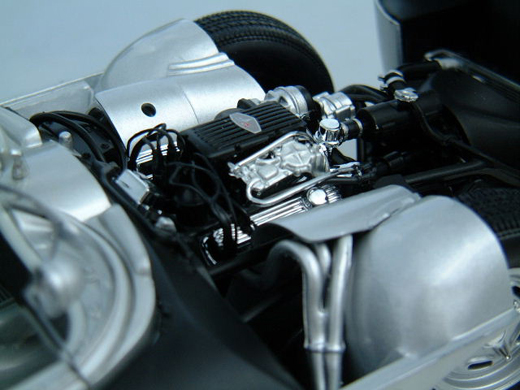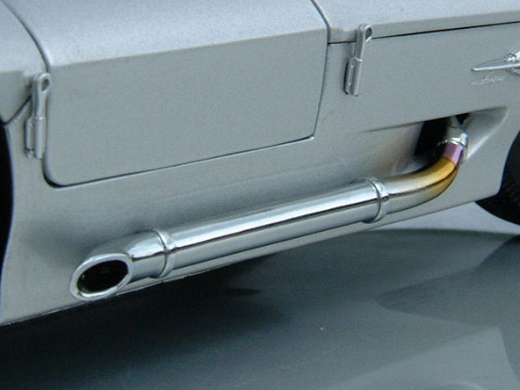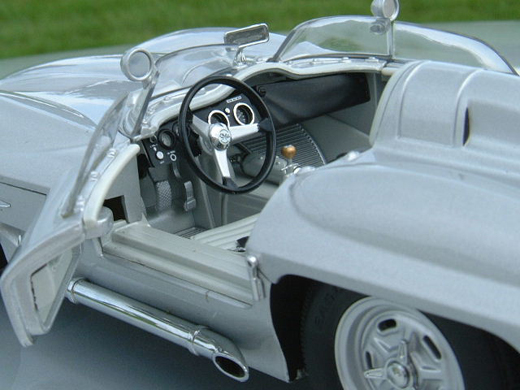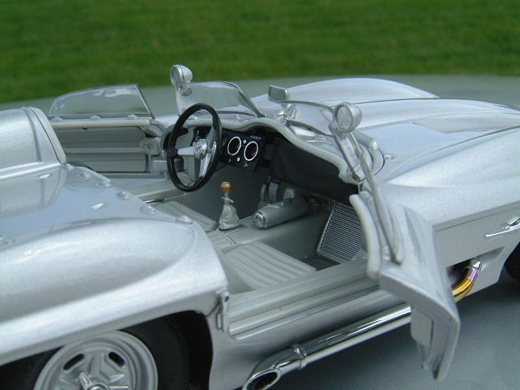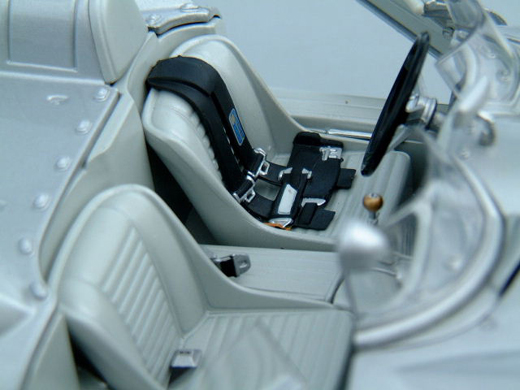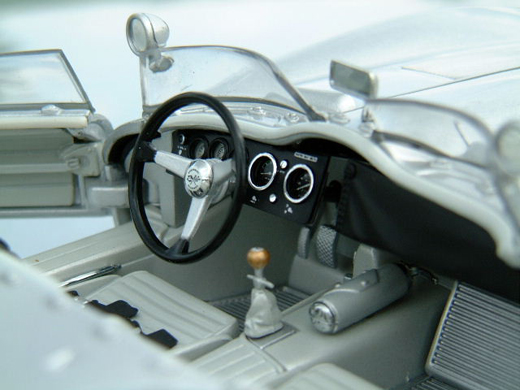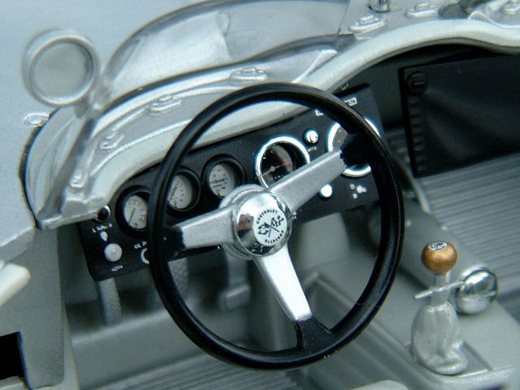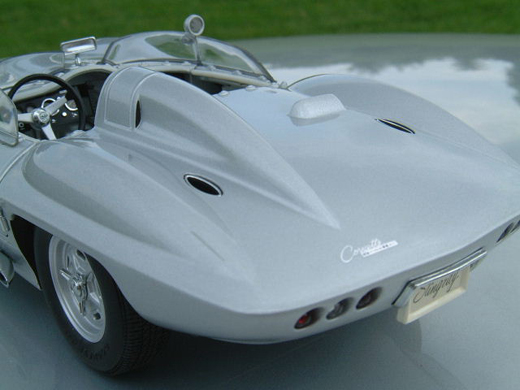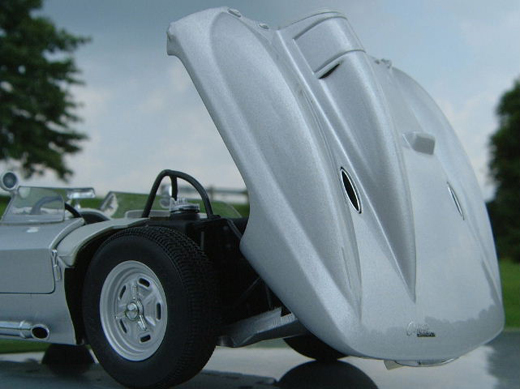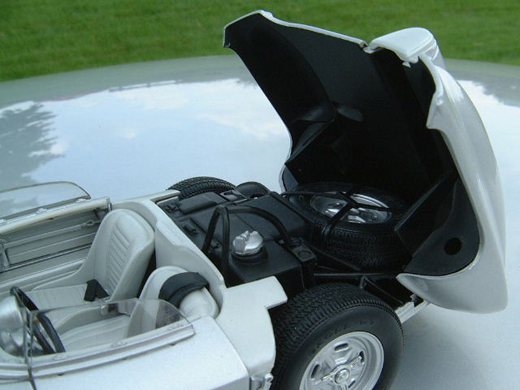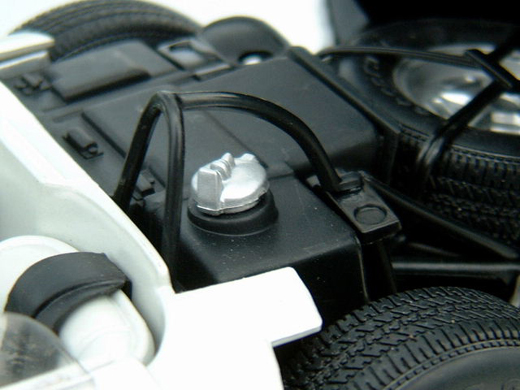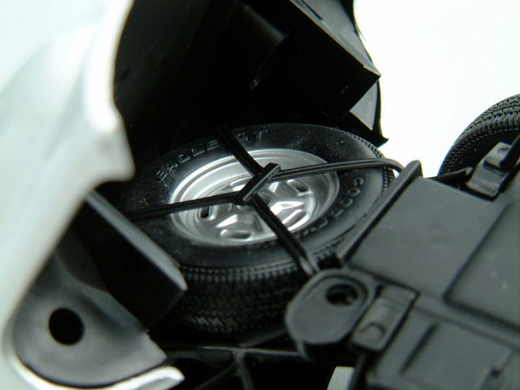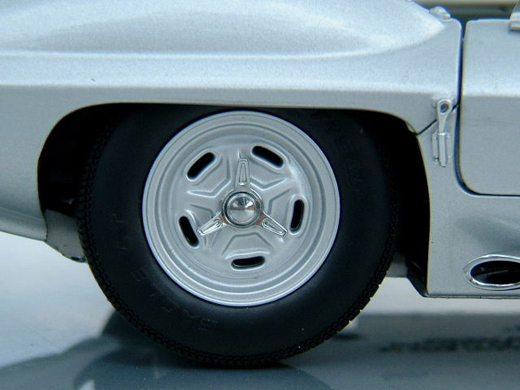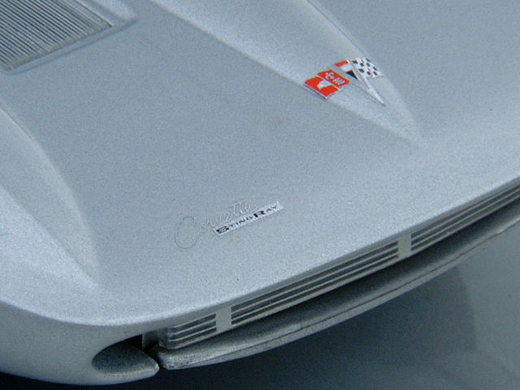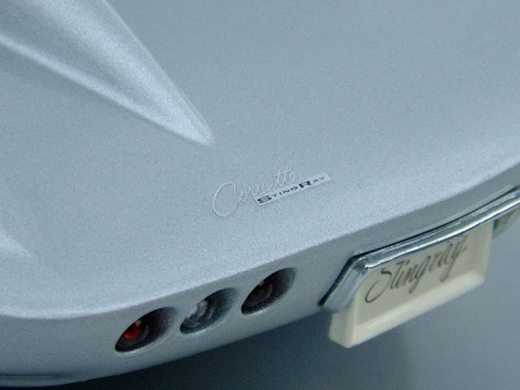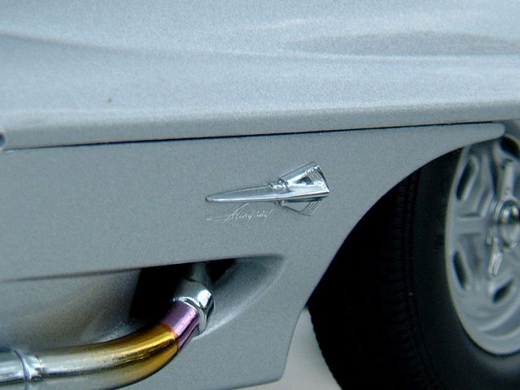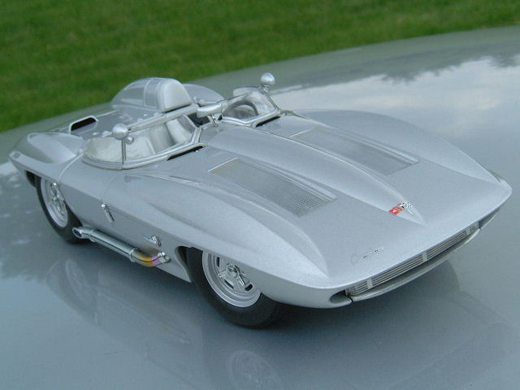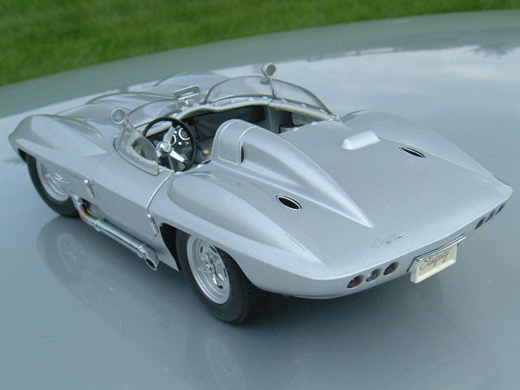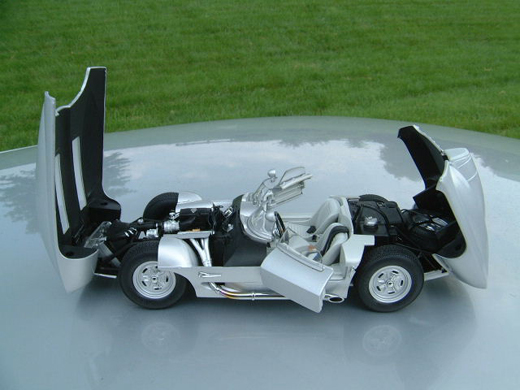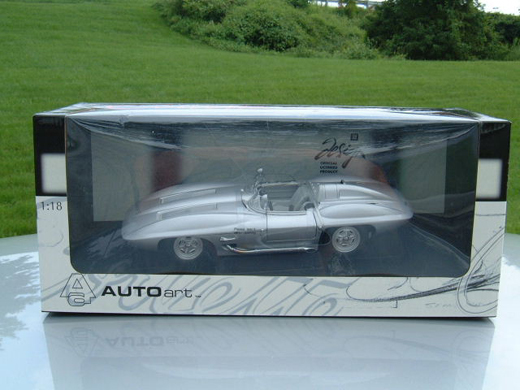 From humble beginnings in 1953, at the hands of Harley Earl - the father of America’s sports car - the Corvette has evolved from an American performance icon into a worldwide respected brand. The Corvette has evoked a passion for its flawless combination of performance & styling and to this day it stands as the epitome of form & function. With its breath taking design and extraordinary accomplishments, the Corvette has captured the hearts & souls of enthusiasts both on and off the track. It needs no mention that the Corvette’s legendary success is greatly due in part to the reciprocal relationship between the sports cars’ street & race variations. Perhaps the greatest example of this connection was the second-generation 63-67 Corvette Stingray.
From humble beginnings in 1953, at the hands of Harley Earl - the father of America’s sports car - the Corvette has evolved from an American performance icon into a worldwide respected brand. The Corvette has evoked a passion for its flawless combination of performance & styling and to this day it stands as the epitome of form & function. With its breath taking design and extraordinary accomplishments, the Corvette has captured the hearts & souls of enthusiasts both on and off the track. It needs no mention that the Corvette’s legendary success is greatly due in part to the reciprocal relationship between the sports cars’ street & race variations. Perhaps the greatest example of this connection was the second-generation 63-67 Corvette Stingray.
Bill Mitchell acquired the chair of GM Design Chief as Harley Earl’s successor in 1958. Mitchell, a passionate designer, had an undeniable zeal for the Corvette, but even greater was his vision. He wanted to build a Corvette race car capable of beating Europe’s best and with the availability of Zora Arkus-Duntov’s defunct 1957 SS test mule, Mitchell’s XP-87 project was underway. Seeing as factory backed racing was taboo at the time due to an AMA ban, Mitchell’s project had to be privately financed and the powers that be insisted that Mitchells design have no recognizable association with the Chevy brand or the Corvette name. With Mitchell’s own time & money heavily invested into the XP-87 project, he contracted stylist Larry Shinoda to assist in the development of the revolutionary concept.
Combining the 57 SS chassis with the body design of the Q-Corvette resulted in a sleek & muscular state-of-the-art open roadster. The XP-87 featured several styling cues reminiscent of sea creatures with its shark-like snout and graceful sweeping lines of a stingray. Not surprisingly, Mitchell’s passions for design & performance were shared with his enthusiasm for deep-sea fishing, and since Mitchell’s concept racecar was to have no bearing to the Corvette name, the XP-87 project was aptly dubbed Stingray. Impressively original and strikingly gorgeous, Mitchell’s Stingray was completed in 1959 and unbeknownst at the time, it would have a tremendous influence on the up & coming Corvette generation that many Corvette enthusiasts to this day revere as the greatest generation in Corvette history.
With the engineering help of Duntov, Mitchell’s 59 Stingray was stuffed with a high-compression fuel-injected 283 V8 that produced 315hp @ 6,200rpm and entered into SCCA C-Class competition. Driving duties for the open roadster Stingray were handed over to accomplished SCCA driver, Dr. Dick Thompson. Dick Thompson raced the 59 Stingray in any and all races Mitchell could afford to enter, and in the end, Dick piloted the Stingray to two consecutive class championships in 1959 & 1960. At the end of the 1960 season, Mitchell pulled the Stingray from racing and exhibited it as a show car, additionally modified with a passenger seat for the purpose of driving it on the street. Not only did Mitchell’s 59 Stingray race car leave an indelible mark on the second generation Corvette, it set the precedent for a line of Corvette concepts that would forever have an affect on the future of the Corvette legacy.
Thanks to the designers & craftsmen at AutoArt, Bill Mitchell’s influential Stingray design has been immortalized in 1/18 scale diecast. Just as Mitchell’s 1959 design took the Corvette to the next level, the Auto Art replica has done the same for the 1/18 scale market. AutoArt is most revered for their outstanding attention to detail & overall fit & finish and paint quality and their replica of the Stingray has taken all 3 aspects to new heights. For starters, AutoArt has faithfully captured every line, bulge, curve & angle of Bill Mitchell’s original design and wrapped it under a lustrous coat of paint that authentically replicates the manner in which the Stingray was exhibited after its stint in SCCA racing.
The exterior of the Auto Art Stingray replica brilliantly displays every nuance of Mitchell’s original design from the Stingray signature hood - with bulges above each wheel well and a center long bulge squeezed between a pair of etched plastic hood inserts - to the race prepared cockpit and aerodynamic rear deck lid. Front windshield mounted rear view mirrors, stock wheels with chrome spinners wrapped in soft to touch rubber, air duct openings and panel latches further authenticate the replication of Mitchell’s gorgeous Stingray racecar. The forward tilting muscular hood & rearward tilting deck lid are decorated with raised metal foil Stingray badges as are the opposite sides of the front fenders underneath chrome plated Stingray’s. The massive muscular hood tilts forward revealing the Auto Art miniature replica of the fuel injected 283 V8 that powered the Stingray around the SCCA’s race courses. the Auto Art 283 V8 is an artistic rendering of black, chrome and cast metal accents accurately replicated with every imaginable detail from wires to hoses, and cast metal painted exhaust headers that pour out the sides of the Stingray body. Each chrome-plated exhaust pipe is amazingly replicated with a purple to copper haze masterfully simulating the discoloration of the pipes when hot. The rear deck lid raises up to reveal a few additional details from a tucked away drivers side roll bar to the cast metal painted gas cap to a strapped in spare wheel & Goodyear tire. While some of these details may seem unnecessary, AutoArt has given each significant attention thus adding to the life-likeness of this scale replica of the 1959 Stingray.
The interior of the Auto Art Stingray, while stark in appearance, is nonetheless a marvelous recess of abounding detail tucked neatly between a pair of small doors that swing out on dogleg hinges. For starters, the passenger seat in this Stingray replica is accurate to the modified Stingray Mitchell exhibited as a show car & drove on the street. Faithful to Mitchell’s 2nd generation Corvette inspiring racecar, the AutoArt Stingray replicates the purpose built gray interior of the Stingray in all of its rudimentary glory. The dash is nothing more than a sectional piece housing a cluster of super detailed recessed gauges & switches mounted behind a 3 spoke steering wheel with a Chevrolet flag logo adorning the center of the wheel. The rest of the interior is accented with a detailed pedal assembly, a detailed shifter topped off with the shift pattern, detailed bucket seats with a racing harness on the drivers side and ordinary belt & clasp on the passenger side. The split front windshield, center mounted rear view mirror and coordinating chrome plated fire extinguisher braced to the center hump finish off the list of realistic qualities that not only make the interior believable but top off an overall package that is very faithful to the original.
AUTOart's Stingray replica wouldn’t live up to Mitchell’s standards without accurately capturing every detail of the original, and from nose to tail, top to bottom, AutoArt has painstakingly captured every detail in true to life fashion. Thanks to the talented craftsmen at AutoArt, Corvette enthusiasts can enjoy one of the many magnificent designs of the legendary GM Design Chief Bill Mitchell and the inspiration to arguably the greatest generation of Corvettes in history, the Stingray. Bill Mitchell’s 1959 Stingray was a monumental concept and AUTOart's flattering reproduction of the Stingray in 1/18 scale is an equally monumental achievement for all collectors to enjoy.




